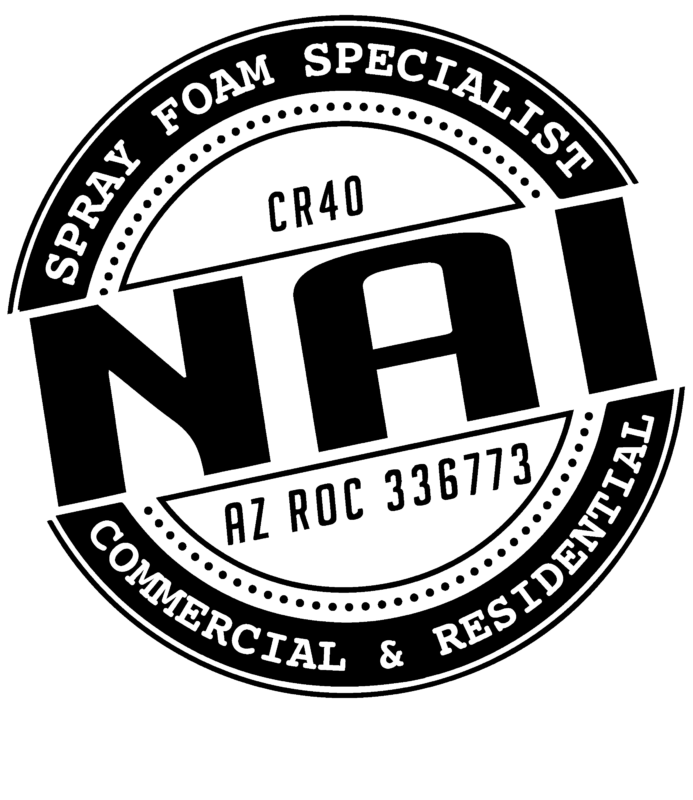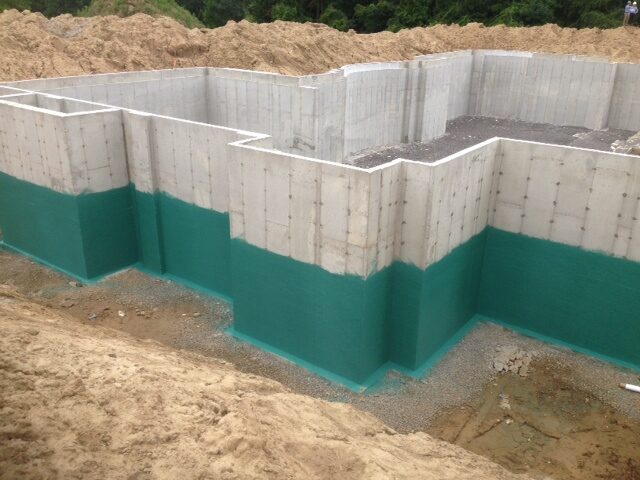Scottsdale summers are known for their intense, dry heat. Temperatures can soar above 100°F, making it essential to find effective ways to keep your home cool and comfortable. One of the most efficient solutions is spray foam insulation. Here we will walk you through how spray foam insulation can transform your home into a cool oasis, saving you money and energy in the process. We’ll cover its benefits, installation process, and how it stands up against other insulation types.
Understanding Spray Foam Insulation
Spray foam insulation is a versatile and highly effective form of insulation. It is applied as a liquid that quickly expands to form a solid barrier, filling gaps and sealing leaks that traditional insulation might miss. This creates an airtight seal that helps regulate indoor temperature.
Types of Spray Foam Insulation
There are two main types of spray foam insulation—open-cell and closed-cell. Open-cell spray foam is softer and more flexible, making it ideal for interior applications. Closed-cell foam is denser and more rigid, providing better insulation and moisture resistance. Both types offer unique benefits and can be used in various parts of your home.
Benefits Over Traditional Insulation
Traditional insulation materials like fiberglass and cellulose have their merits, but they fall short compared to spray foam. While fiberglass can leave gaps and settle over time, spray foam expands to fill every nook and cranny. This ensures a more uniform barrier and superior thermal resistance, which is crucial for Scottsdale’s extreme heat.
How It Works Against Heat
Spray foam insulation excels in hot climates due to its high R-value, a measure of thermal resistance. Higher R-values mean better insulation and spray foam typically offers higher R-values than other materials. This makes it particularly effective in preventing heat transfer, keeping your home cooler during Scottsdale’s hottest months.
The Installation Process
Installing spray foam insulation is a job best left to professionals. The process involves preparing the area, applying the foam, and allowing it to cure. Here’s a closer look at what you can expect during installation.
Preparation
Before installation, the area must be thoroughly cleaned and prepared. This includes removing any old insulation and ensuring the surfaces are dry and free of debris. Proper preparation is crucial for the foam to adhere correctly and perform optimally.
Application
The foam is applied using specialized equipment that sprays the liquid mixture onto the surfaces. It expands rapidly, filling gaps and creating a seamless barrier. The application process is quick, often taking just a few hours for an average-sized home.
Curing and Final Touches
Once applied, the foam needs time to cure and harden. This usually takes about 24 hours. After curing, any excess foam is trimmed, and the area is inspected to ensure complete coverage. The result is a solid, airtight layer of insulation that significantly improves your home’s energy efficiency.
Maximizing Energy Efficiency
Spray foam insulation does more than just keep your home cool—it also enhances overall energy efficiency. By reducing the amount of work your HVAC system has to do, you can notice substantial savings on your energy bills.
Lower Utility Bills
One of the most immediate benefits of spray foam insulation is the reduction in utility bills. By maintaining a consistent indoor temperature, your air conditioner doesn’t have to work as hard, leading to lower energy consumption and costs.
Reducing HVAC Wear and Tear
When your HVAC system runs less frequently, it experiences less wear and tear, potentially extending its lifespan. This can save you money on maintenance and replacement costs in the long run.
Environmental Impact
Besides financial savings, improving your home’s energy efficiency also reduces your carbon footprint. By using less energy, you’re contributing to environmental conservation efforts, making spray foam insulation an eco-friendly choice.
Comparing Insulation Types
While spray foam insulation offers numerous benefits, it’s essential to compare it against other types of insulation to make an informed decision.
Fiberglass Insulation
Fiberglass is one of the most common insulation materials. It’s relatively inexpensive and easy to install but has several drawbacks. It can leave gaps, lose effectiveness over time, and does not provide an air seal like spray foam.
Cellulose Insulation
Cellulose insulation, made from recycled paper products, is another option. It’s environmentally friendly and provides decent insulation. However, it can settle over time, reducing its effectiveness and leaving gaps for air leakage.
Mineral Wool Insulation
Mineral wool is a durable and fire-resistant insulation option. It offers good thermal resistance but lacks the airtight seal provided by spray foam. It’s also heavier and can be more challenging to install.
Longevity and Maintenance
One of the standout features of spray foam insulation is its longevity. Properly installed spray foam can last for decades without needing replacement or extensive maintenance.
Durability
Spray foam is resistant to moisture, pests, and mold, making it a durable choice for insulation. Unlike other materials, it doesn’t degrade or lose its effectiveness over time.
Minimal Maintenance
Once installed, spray foam requires minimal maintenance. Regular inspections are recommended to ensure it remains intact, but significant issues are rare. This low-maintenance aspect makes it a cost-effective long-term investment.
Warranty and Guarantees
Many insulation companies offer warranties on their spray foam installations, providing peace of mind and protection for your investment. Be sure to inquire about warranties when choosing a provider.
Cost Considerations
While spray foam insulation offers many benefits, it’s essential to consider the cost and potential return on investment.
Initial Investment
Spray foam insulation can be more expensive upfront compared to other types of insulation. However, the initial investment is often offset by long-term savings on energy bills and reduced HVAC maintenance.
Long-term Savings
The savings on utility bills and maintenance costs can quickly add up, making spray foam insulation a financially sound investment. Many homeowners find that it pays for itself within a few years.
Financing Options
Some insulation companies offer financing options to help manage the upfront costs. Be sure to explore these options and choose a plan that fits your budget.
DIY vs. Professional Installation
Deciding between DIY installation and hiring professionals is a crucial consideration.
Benefits of Professional Installation
Professional installation ensures the job is done correctly and safely. Professionals have the experience and equipment needed to apply the foam evenly and effectively, maximizing its benefits.
Risks of DIY Installation
DIY installation may seem cost-effective, but it comes with risks. Without proper training, you may not achieve the desired results, and mistakes can be costly to fix. Additionally, handling the chemicals used in spray foam requires caution.
Making the Right Choice
For most homeowners, professional installation is the best choice. It ensures optimal performance and longevity, providing the best return on investment.
Enhancing Home Comfort
Spray foam insulation does more than improve energy efficiency—it also enhances overall home comfort.
Consistent Indoor Temperature
By creating an airtight seal, spray foam insulation helps maintain a consistent indoor temperature. This means no more hot or cold spots, making your home more comfortable year-round.
Noise Reduction
Spray foam also acts as a sound barrier, reducing noise from outside and between rooms. This added benefit can make your home quieter and more peaceful.
Improved Air Quality
By sealing gaps and preventing air leaks, spray foam insulation can improve indoor air quality. It helps keep out pollutants, allergens, and moisture, creating a healthier living environment.
Choosing the Right Insulation Company
Selecting the right company for your spray foam insulation project is crucial.
Research and Reviews
Start by researching local insulation companies and reading customer reviews. Look for companies with a proven track record and positive feedback from customers.
Questions to Ask
When contacting insulation companies, ask about their experience, licensing, and warranties. Inquire about the types of spray foam they use and their installation process.
Getting Quotes
Obtain quotes from multiple companies to compare prices and services. Remember, the cheapest option isn’t always the best. Consider the company’s reputation and the quality of their work.
Reach Out to NAI Spray Foam Today
Spray foam insulation offers many benefits, including improved energy efficiency, longevity, low maintenance, and enhanced home comfort. It’s essential to choose a reputable insulation company for optimal results and consider the long-term savings and financing options available.
If you’re interested in experiencing these benefits for yourself, look no further than NAI Spray Foam. With our expertise and top-of-the-line products, we are committed to providing superior service and exceptional results. Contact us today to schedule your spray foam insulation installation and start enjoying a more comfortable, cost-efficient home. So why wait? Reach out to NAI Spray Foam today!

